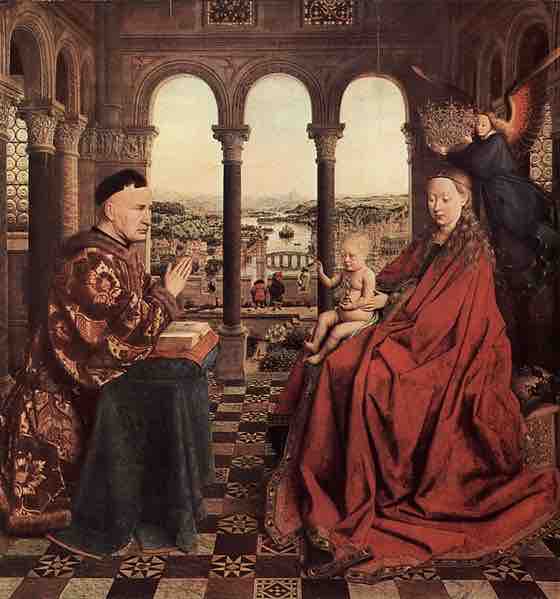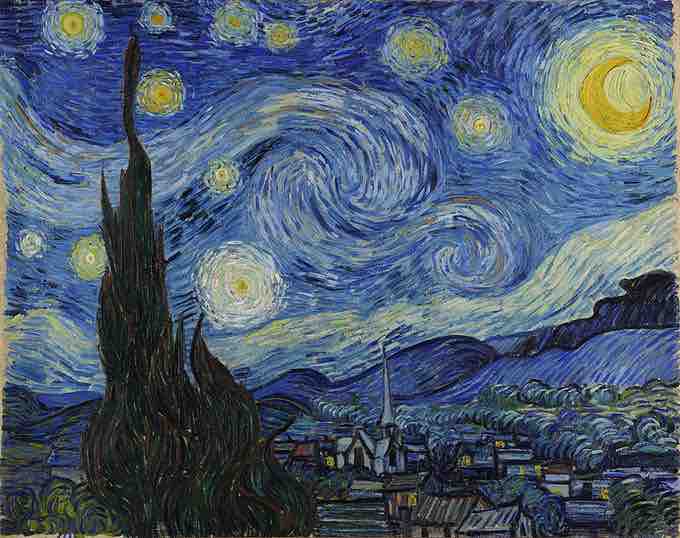Texture
Texture in art stimulates the senses of sight and touch and refers to the tactile quality of the surface of the art. It is based on the perceived texture of the canvas or surface, which includes the application of the paint. In the context of artwork, there are two types of texture: visual and actual. Visual texture refers to an implied sense of texture that the artist creates through the use of various artistic elements such as line, shading and color. Actual texture refers to the physical rendering or the real surface qualities we can notice by touching an object, such as paint application or three-dimensional art.
It is possible for an artwork to contain numerous visual textures, yet still remain smooth to the touch. Take for example Realist or Illusionist works, which rely on the heavy use of paint and varnish, yet maintain an utterly smooth surface. In Jan Van Eyck's painting "The Virgin of Chancellor Rolin" we can notice a great deal of texture in the clothing and robes especially, while the surface of the work remains very smooth .

Jan van Eyck, The Virgin of Chancellor Rolin, 1435
The Virgin of Chancellor Rolin has a great deal of texture in the clothing and robes, but the actual surface of the work is very smooth.
Paintings often use actual texture as well, which we can observe in the physical application of paint. Visible brushstrokes and different amounts of paint will create a texture that adds to the expressiveness of a painting and draw attention to specific areas within it. The artist Vincent van Gogh is known to have used a great deal of actual texture in his paintings, noticeable in the thick application of paint in such paintings as Starry Night.

Vincent van Gogh, The Starry Night, 1889
The Starry Night contains a great deal of actual texture through the thick application of paint.